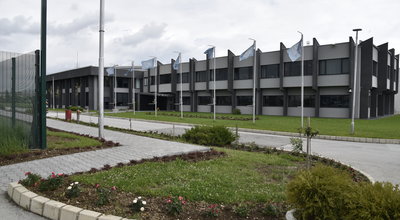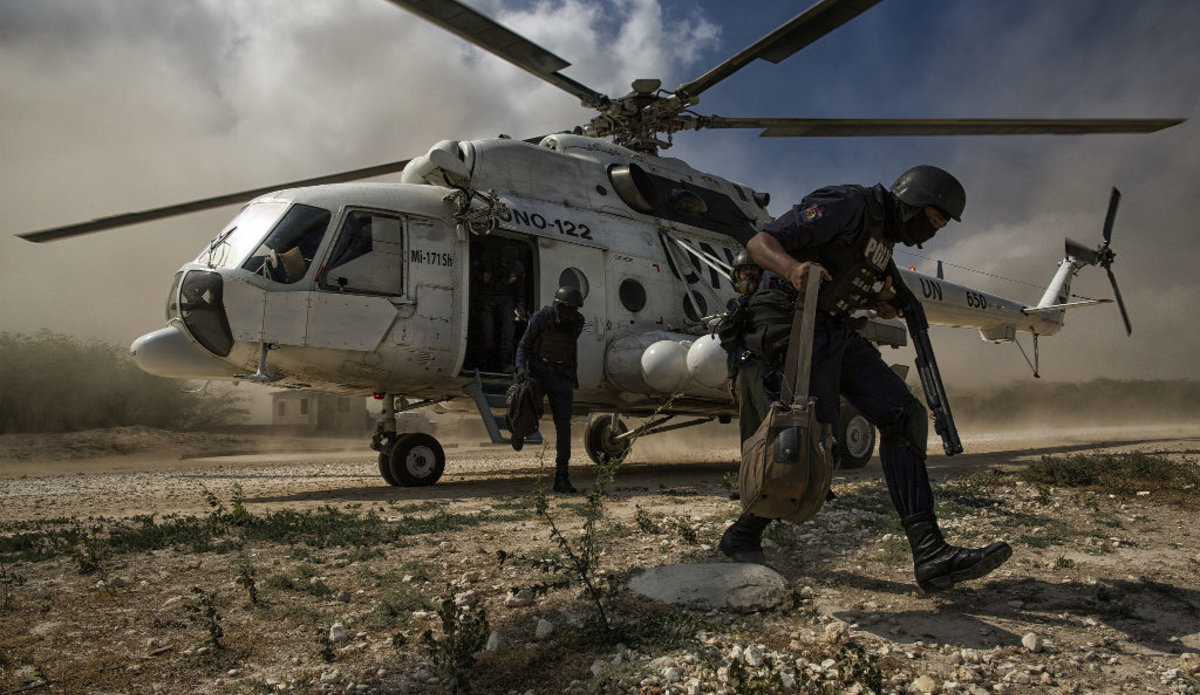27 Oct 14
In the village of Restelica, home to an unusual minority language-speaking community, parents must decide whether their children’s future is better served by a Kosovo education or a Serbian one.
Una Hajdari
Restelica
The building in the mountain village of Restelica looks like many primary schools all over Kosovo, showing its age in its yellowing, cracked facade. Outside, rosy-cheeked kids chat amongst themselves.
But when class starts, they file into different schools within the same building. One is called Restelica and is part of the Republic of Kosovo’s education system, while the other is called December 22 and is part of Serbia’s system.
In the classrooms, children who live in the same place study in different languages and learn very different histories.
Similar arrangements exist in other Kosovo towns that have a mix of Albanians and Serbs. But curiously, in Restelica, the 537 students share the same mother tongue, Nasinski – a South Slavic language related to Macedonian – and are culturally indistinguishable. However if you ask them, they will say they are different.
“Those who go to school in the Serbian system identify as Gorani. Those who go to school in the Kosovo system identify as Bosniaks,” explained Jusuf Hodza, the principal of the Restelica primary school.
The choice whether to go into the Kosovo system or the Serbian one has implications far beyond the teaching. It ultimately affects the options students will have for universities and employment, since Kosovo does not recognise diplomas from the Serbian system operating within its own borders, just as Serbia does not recognise any Kosovo diplomas.
As Kosovo and Serbia have taken steps to normalise relations, including unwinding Belgrade’s parallel government institutions that have been in place since the end of the war in 1999, education remains a major unresolved issue. Kosovo’s Ministry of Education estimates that 17,000 students attend schools operated and funded by Serbia within Kosovo’s borders.
This has created dilemmas for the Gorani and Bosniaks in Restelica, as well as other minorities in Kosovo such as Croats, Montenegrins and Roma, who do not have their own schools, and face imperfect choices between two systems.
In Restelica, the distinction between Gorani and Bosniaks is a relatively new one. After the break-up of Yugoslavia, the establishment of Bosnia and Herzegovina and the rise of a Bosniak national identity as a Slavic Muslim group inside and outside its borders, some Gorani found themselves more comfortable under a new umbrella.
In his office, Hodza has a picture of Alija Izetbegovic, the wartime leader who became the first president of Bosnia. He says that identifying as Bosniak has very practical implications.
“I oversee the children who decide to go to the Kosovar system. Their parents can choose to either send their kids to school in Bosnian, or in Albanian. Although the latter isn’t spoken much here [in the area around the village], the parents do this because they want their children to be able to work in, let’s say, Pristina,” he said.
When asked about the children who go to school in Serbian, he replied matter-of-factly: “Ask the other principal.”
At the other end of the hall, Misin Hodza was sitting at the end of a long table in a smoky room, where the rest of his teaching staff go for breaks between classes. “I’m the other director,” he said with a smile.
The two principals, who are not related, share a very common last name, reflecting the small distinction between Bosniaks and Gorani in Restelica.
Behind him, a few cabinets are filled with Serbian textbooks – illegal education material, according to the Kosovo government. Misin Hodza, a Gorani, argued that those who identify as Bosniaks are confused. “After the war, everyone started identifying as Bosniaks. We have a separate identity, and should not be grouped with the Bosniaks in the other parts of the Balkans,” he said.
When the school organises football matches, half the school plays for the Kosovo team and the other plays for the Serbian team or the Gorani one. Their school holidays are different too, some following official holidays in Kosovo and others taking those celebrated in Serbia.
“On May 6, we celebrate the National Day of Goranis, also known as the Orthodox holiday of Djurdjevdan. The Bosniak children celebrate Bosniak Day, on September 27,” said Hodza.
Nevertheless, the divisions do not seem to be a cause of tension. They are impossible to see in the hallways, as the students talk to one another in Nasinski (“Our Language”) during the day. But eventually students move onto separate buildings in the eighth or ninth grade, when Gorani go to a school in Mlike, while Bosniaks go to one in either Krusevo or Dragash.
Almin Hodza, a seventh-grade Bosniak student, said he understood why parents would opt to stay in the Serbian system. “The government in Kosovo didn’t offer anything for the people living here, while the Serbian government did,” he says.
Dusan Maksimovic, an advisor to Serbia’s Ministry of Education who serves as key link to its schools in Kosovo, is proud that such schools continue to serve non-Serbs.
“Unlike the Kosovo system, the Serbian system is much more inclusive. We represent a true multi-ethnic system, with all the Slavic communities in Kosovo and Metohija being included,” he said, using Serbia’s official name for Kosovo, which it still legally considers as its province.
While the Serbian education system in Kosovo is not going out of its way to serve non-Serbs, it is clear that many groups simply aren’t served by Kosovo’s education system. Ironically, in Janjevo, 75 Croatian students attend a Serbian school and use textbooks in Cyrillic, at a time when the introduction of Serbian Cyrillic signs on official buildings has sparked protests in eastern Croatia.
According to the Ahtisaari Plan, which has served as the blueprint for policy-making in independent Kosovo – especially with regard to the non-Albanian population – people have the right to be educated in the language of their choice and to use the curriculum of the Republic of Serbia.
However, the books would have to go through a commission set up by Kosovo’s Ministry of Education, with representatives from each community. The commission would inspect the books for the so-called “national group of subjects”, which include their native language, history, music and art.
Initially, the Ministry of Education did not have any schoolbooks in a non-Albanian language. Pupils were taught that Bosnia was their home country, much like the children in the Serbian system are taught about Serbia in their respective education system.
The Ministry of Education tried to breach the gap, unsuccessfully, five years ago. A commission was formed to inspect the Serbian-language books and offer changes to the system.
“A commission, with three Serb and three Albanian representatives and the International Civilian Office was formed to inspect the textbooks. We offered them suggestions, for how the textbooks could be changed. They were never accepted,” says Enesa Kadic, the head of the division for minority education at the Ministry of Education.
Opting for either system brings uncertainty. Kosovo and Serbia have yet to tackle the mutual recognition of diplomas in their EU-brokered dialogue with Kosovo, and it’s unclear when that will happen. Students attending the Relocated University of Prishtina, established in 1999 in North Mitrovica by Serb faculty from the University of Prishtina, face troubles getting their degree recognised because of a disagreement over which state seal appears on the diploma. Currently it’s Serbia’s, and Kosovo’s Ministry of Education says it should be Kosovo’s.
At the same time, graduates of universities certified by Kosovo’s Ministry of Education face their own problems with degree recognition with Serbia and other states.
But for Jusuf Hodza, the principal of Restelica primary school, a better future lies in embracing Kosovo’s education system.
“The people who realise this is an independent country, whether they like it or not, have registered as Bosniak. They have to think about where they are going to enroll their children in the future,” Hodza said.












